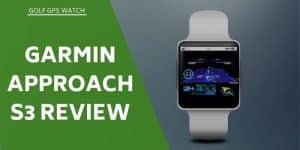Launch monitors have become commonplace at driving ranges where professional golfers fine-tune their distance control and swings.
These launch monitors were largely beyond the budget of most amateur golfers but, due to the advances in technology, companies are bridging the gap in equipment available to amateur golfers and professional golfers.
Launch monitors are becoming more affordable and golfers of all levels are benefiting from this and are in a position to improve their swing and overall game.
Ernest Sports initially launched its first launch monitor, the ES12. After doing some additional research and development they launched the ES14 launch monitor as an affordable tool for teaching professionals, club fitters, and serious golfers.
All the products are assembled in their offices in Atlanta, Georgia and this has enhanced their quality control on every step of the manufacturing process.
The monitors are assessed by Jeremy Schmiedeberg, a scratch golfer, by hitting 30-yard wedge shots until they are satisfied that the unit is perfect. The company believes that the 30-yard shots are the best indicator that the unit is working properly.
Only once the launch monitor has passed the test will it be shipped.
The ES14 Personal Launch Monitor Pro Specs
- Color: White or Charcoal with silver frame
- Dimensions: 8 ¼ inches high X 5 ½ inches wide X 1.85 inches deep
- Weight: 2 pounds 4 ounces
- Power: Standard 9V Battery or AC/DC Adapter Optional
- Display: 5 inches high X 5 inches wide
- Operating Temperature: 32 – 110 degrees (F)
- Compatibility: Windows 8 and 10, Apple and Android Devices
Affordability makes the ES14 available to a substantial portion of the golfing community
Accuracy and consistency in data feedback
Template make for easy setup
Templates may tend to break easily
Lacks some features that are available in top-end launch monitors
Accessories
The ES14 comes well packaged and protected with two templates, a carry case, and a quick start guide.
The company supplies a free app that enables data storage, sharing data, and effortless reviews of every shot on a display held in the palm of your hand.
The 2 templates are as follows:
- The first template is used for ball position indicating where you should place the ball for the best reading
- The second template that is used to set the proper angle at which the kickstand should be placed for any given club type
The quality of the templates seems to be substandard and is not expected to last for an extended period but fortunately, it will not be too difficult to reproduce.
Buttons
The buttons are aesthetically pleasing and well placed. The quality and functionality of the buttons could be improved as the buttons are hard to press, probably to make them last longer, but not the quality that you would expect on a digital device.
Power
When you have no access to an electrical outlet the unit can be operated using a 9V battery that is located under the kickstand. A backup battery can be stored in a compartment behind the operating battery. This makes it effortless to swap out when you run low on battery power.
When you have access to an electrical outlet you can operate the unit by making use of a power adapter either indoors as well as outdoors.
Functionality
The ES14 personal launch monitor is aimed at the market to aid in:
- Game improvement through the feedback on ball striking and ball trajectory information either outdoors or indoors
- Club fitting and teaching by evaluating and comparing results from various club tests. The ES14 Pro provides the data required by coaches to analyze, track, and improve their students’ game
Positioning the Monitor
To minimize the number of no-hits it comes with templates provided in the box. This will aid in the optimal placement of the ball & the monitor itself.
The ES14 must be placed 14 inches across from and 14 inches downrange of your golf ball. The distances must be measured from the center of the kickstand. The front-end of the launch monitor containing the power button should face the golf ball and the display should face the golfer.
The kickstand is pretty well made and snaps into the lower back of the unit for easy storage. When opening it for use, you have to pull it to the selected angle according to the notches set on the kickstand.
There are 3 recommended positions for the kickstand
- The first position is the most upright position at 75 degrees and most suitable for shots with clubs from a driver through to a 5-iron.
- The second or middle position is at 60 degrees and most suitable for shots with your 6-iron through to your gap wedge.
- The third and final position is at 45 degrees and most suitable when hitting your lob-wedge and sand wedge.
ES14 Monitor ‘Ruler’
One of the accessories supplied is the ‘ruler positioning aid’ that is designed to aid in correct ball placement and data collection. The ruler is printed on both sides and can be used by either right or left-handed golfers.
It is highly recommended to leave a 3-inch buffer between the golf ball and the ruler to avoid damaging the ruler.
Key Data Points
The ES14 is based on Doppler technology and it has two Doppler radars to take readings. The first radar faces forward to capture the ball trajectory data and the second radar faces backward to capture club head data.
The monitor delivers a wide range of statistical data instantly. Data related to ball and clubface contact is measured and ball trajectory data is calculated by algorithms.
Feedback is provided immediately through visual and verbal feedback. For the best verbal clarity, it is recommended that you use wireless headphones in an outdoor environment.
Data points measured:
- BALL SPEED – the rate at which the ball is traveling immediately after impact.
- SPIN RATE – the rate of backward rotation on the ball immediately after impact
- LAUNCH ANGLE – the angle between the ball path and the ground at launch
- SMASH FACTOR – the ratio between club speed and ball speed i.e. ball speed/club speed
- CLUB SPEED – the rate at which the clubhead is moving before impact
- DISTANCE – Distance is the distance the ball travels through the air as well as the total distance.
The ES14 launch monitor only reads real golf balls and will not provide accurate data if you use foam balls, floater balls or limited flight golf balls. Only actual shots using a golf ball will register and practice swings will not be reflected.
The ES14 Launch Monitor App
- There is a Course Caddy feature on the app that will recommend a club for a set distance based on past performance
- The range data session data feature enables you to track your practice session and store key data points
- The Club Gapping feature will allow you to analyze shot data by the club to set a range for specified clubs
- There is a skills challenge feature on the app to challenge your skills through games and thus improve your skills
- Another feature on the app is the Course view feature that will help you to analyze your shot data on the course
- An awesome feature is that you export data to your laptop in Excel format for further analysis
- The app provides immediate visual data feedback on every shot as well as audio feedback
Ernest sports have added new features to the App that enables you to compare your stats to professional golfers on the PGA and LPGA tours. You can adjust settings to fine-tune the feedback by setting environmental factors, ball type (Limited flight range balls, old range balls and more).
There is an option to display an animated view of your ball flight combined with the data collected for the shot.
The Home page of the app provides access to feature to:
1. Range Session
Under this home page option, you can start a new range session or join a saved session from previous practice exercises.
Your Range Session information is displayed in two ways:
- Shot by shot data offers two viewing options:
- View 1 displays the club used and stats about the current shot in a CIRCULAR FORMAT. You select the data to be displayed in the larger circle by tapping on that circle.
- View 2 displays the club used and stats about the current shot in COLUMNS. The two columns have large, easy-to-read numbers.
- The complete session allows you to see information on every shot in a scrolling format.
2. Session Log
This home page option enables you to view data from previously recorded sessions individually by scrolling through the list of recorded sessions and selecting the session that you want to view. You can email your range session data from the app to a coach or trainer. Some also like to compare and compete with fellow golfers.
3. Club Averages
This home page option enables you to view club averages displays data for each club under the following categories:
- Club speed
- Ball speed
- Distance
- Spin
- Smash factor
- Launch angle
4. Settings
- This home page option allows you to change the settings for Averages, Units, Distance Type and Links.
5. Tutorial
- Under this home page option, you can access a digital version of the ES14 Quickstart Guide.
6. Performance
- As mentioned earlier data at impact is captured and ball trajectory data is calculated. The following data is captured:
7. Shot Capture
Launch monitors are unlikely to capture every shot and you will find some “no-hit” returns even on the top-end launch monitors.
Following the instructions provided with the package leads to consistent capturing of shots and very few missed shots. If you place the ball outside of the proposed area you will have many “no hits” returns.
8. Ball speed
Feedback on shots that were struck well was within 2% – 3% of measurements on top-end launch monitors but the feedback was very consistent.
9. Clubhead Speed
The clubhead speed is approximately 3% higher than some of the upper-end launch monitors but the data is consistent therefore the numbers are trustworthy enough to be valuable.
10. Smash Factor
Since the smash factor is a calculated value and the ball speed and clubhead speed is relatively accurate, the feedback received is assumed to be accurate.
The following data is calculated by algorithms from data collected at the time of impact:
11. Spin Rate
As with most of the data returned, the spin rates are consistently quite a bit higher than top-end launch monitors. This impacts on the calculated distances.
12. Shot carry
Carry distances are consistent and within an acceptable tolerance of 3% of the top-end launch monitors and will provide sufficient feedback to fine-tune your distances for every club.
13. Launch Angle
The launch angle is within an acceptable variation from the top-end launch monitors and it provides a promising idea for you to understand where your swing is at the moment of impact.
Final Verdict
The ES14 is not aimed as a competitor to the top-end launch monitors and does not have all of the advanced features of these top-end launch monitors. Considering the affordability of the unit it exceeds the expectations on the accuracy of data returned on the shots.
When shots are mishit, or slightly off-center hits return values that are less accurate on good shots. When you hit a push-draw or a pull-cut you can obtain more accurate data by adjusting the alignment to consider this.
The ES14 is an all-around excellent product and the affordability will make it a great practice tool to add to your bag. The ability to use this in an indoor space increases the value that you will get from using the ES14.
Related Articles
- SkyTrak Launch Monitor Review – What We Really Think
- Flightscope Mevo Review
- SkyTrak vs Trackman – Which Is The Best Launch Monitor?
- Flightscope Mevo vs Trackman – A Launch Monitor Comparison
Nick is the founder of GolfSpan and an avid golfer. He's not quite a pro but has over 15 years of experience playing and coaching golfers worldwide. His mission is to bring the golfing community a better experience when it comes to choosing the right golf gear and finding the right setup for your game.






